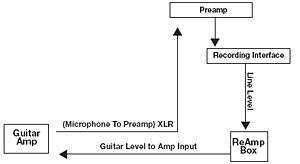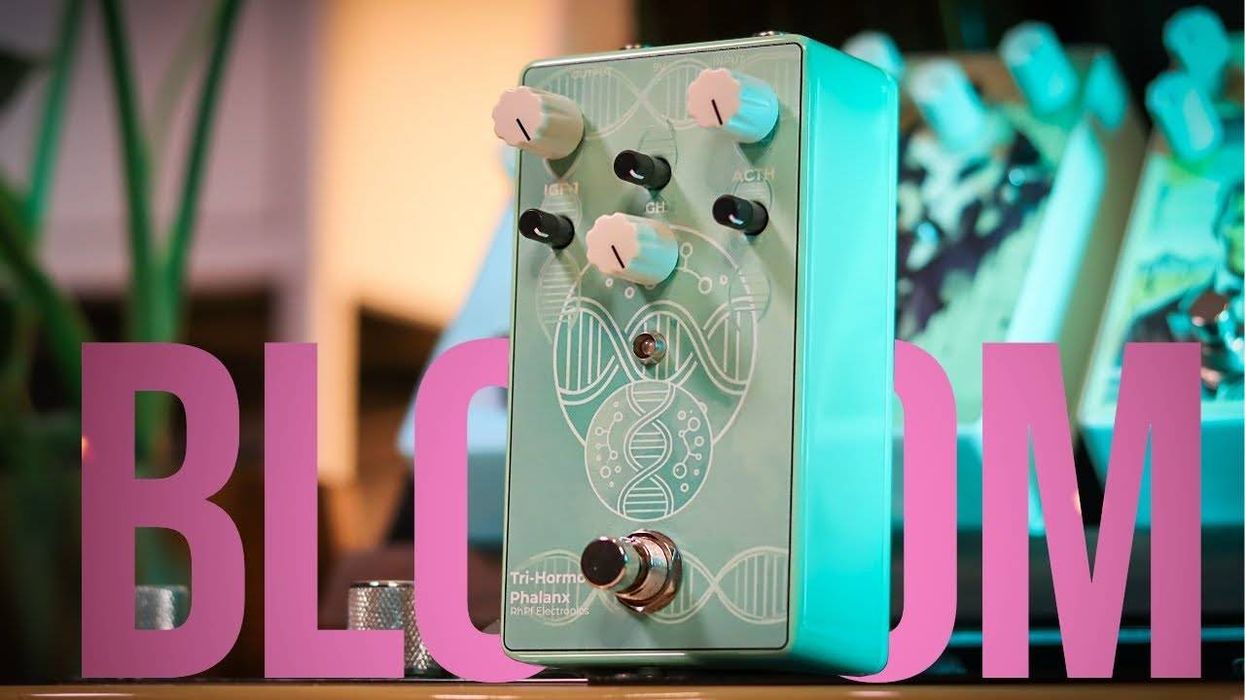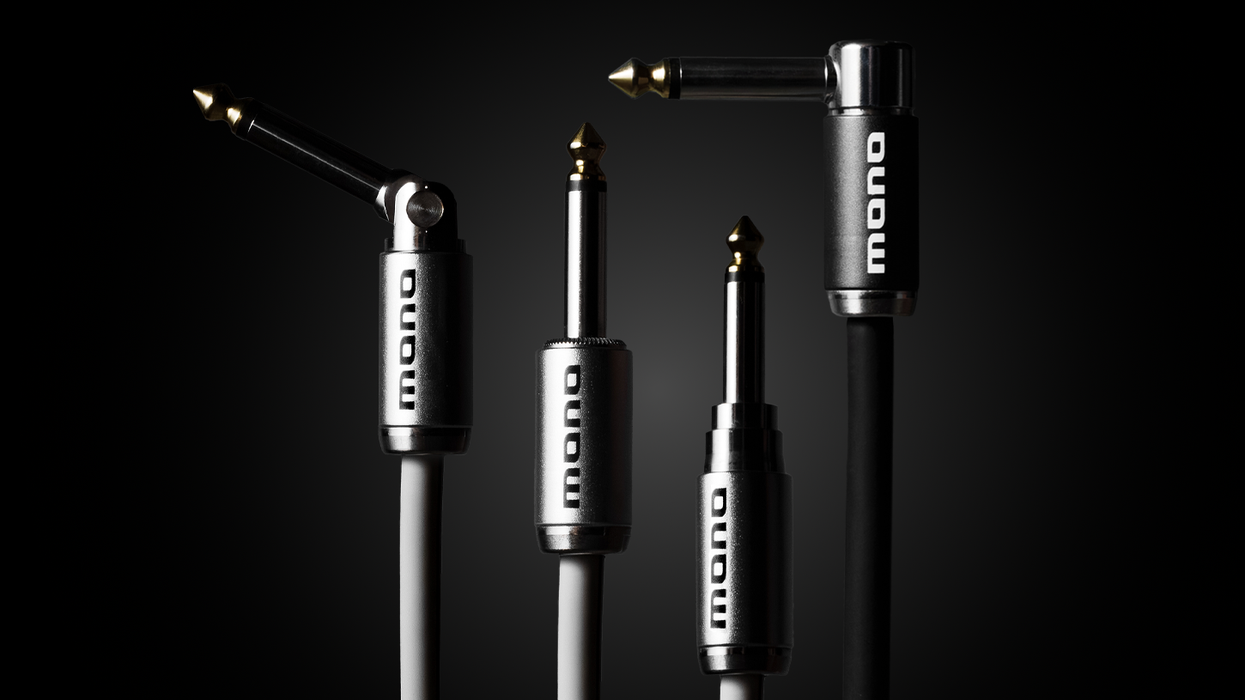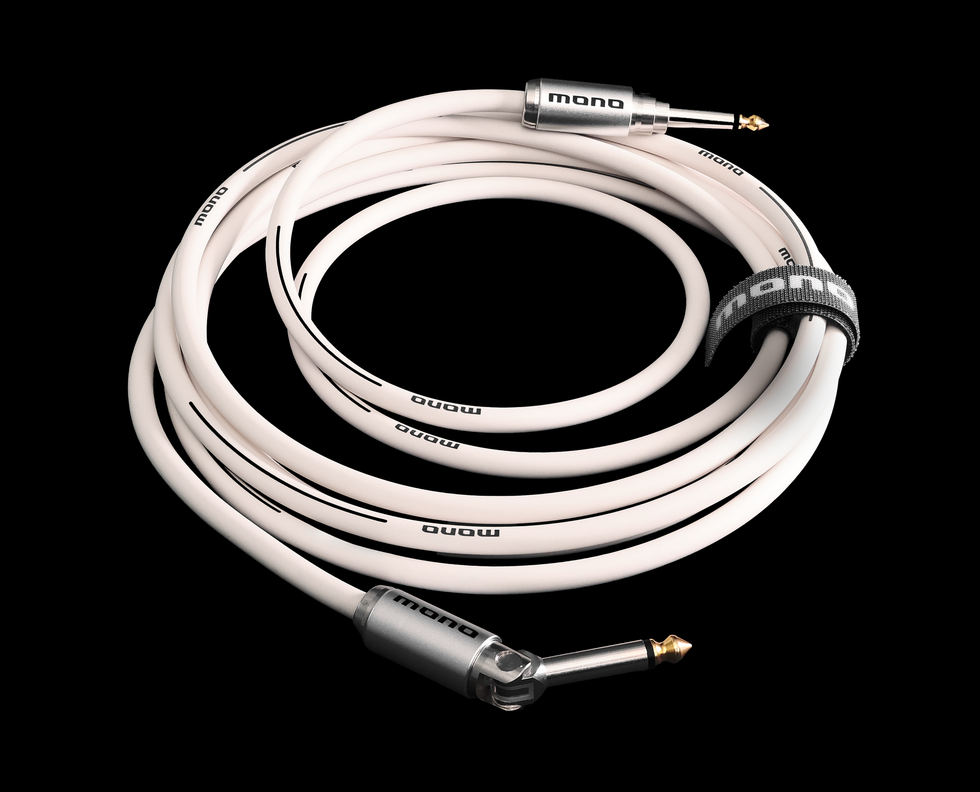 | |
|
One solution for focusing on the guitar performance while tracking and worrying about getting the best tone later is “re-amping.” Re-amping is the process of taking a previously recorded signal and routing it back to your guitar amplifier, where it is recorded again using a microphone. This process allows you to pay more attention to the actual performance of the guitarist and not have to concentrate on getting the “perfect tone” at the same time.
To re-amplify a guitar track, you will need to record a dry, unprocessed and unaffected track. To do this, use a direct box; your signal path will travel from the guitar out to the direct box input, then out of the direct box thru jack to the guitar amplifier input. This allows the guitarist to hear their normal sound from the amp, while you record a dry, direct tone. The XLR output on the D.I. is routed to a mic preamp and into your audio interface or recorder, where it is recorded onto an audio track. You can simultaneously mic up the cab and record the guitar to a separate track as a reference or as a keeper track, but the main goal is to capture a squeaky clean direct track that you will use to eventually achieve the tone you want.
To re-amp the signal for your final guitar track, take a line level output from your recorder to a re-amping box and route it from there into your amplifier. Dial up the tone you want on the amp, place a mic where you want it and record this signal back into a new track on your recorder. This is the track you will use when mixing down.
The re-amp box converts the balanced line level signal to a usable, unbalanced guitar level, since guitar amps are not compatible with line level signals. There are a number of re-amping boxes available that make the job easy. Two of my favorites are the Reamp from John Cuniberti and the X-Amp from Radial Engineering. Either model will pay for itself time and again in your recordings.
One thing I like to do is take the direct signal from my recorder – in this case, ProTools – and send it to my re-amping box and amp. I select a portion of the guitar track, set it to play back as a loop, turn on my guitar mics and go into the room with the amp wearing a set of headphones. The loop plays back continually, allowing me to try different mic placements and amp settings and hear the changes through the phones. This also helps me prior to recording a band’s tracks. I record a quick part from the guitarist, set it to loop and go move the mics around. This avoids having the guitarist play over and over again, potentially wearing himself out before tracking. You can use the same idea with guitar amp modeling software – record your guitar track direct and later apply the modeler to get the exact tone you want. Re-amping also allows you to record using modeling software late at night and use a real amp later when you won’t disturb anyone else.
These are just a few examples of what reamping can do for you in the studio. Other ideas include trying different guitar cabinets on a song as well as experimenting with tones, EQ settings and effects, without having to commit to any particular sound too early in the process.
Most of us have ended up wishing we had played through a different amp on a song or questioned why we used so much delay when tracking. With two devices – a direct box and re-amp unit – we can avoid having to live with a recorded tone we want to change.
Mike Picotte
Senior Sales Engineer Mike Picotte has worked for Sweetwater Sound in Fort Wayne, Indiana, since 2002. He owns Surreal Records, Inc., and records and mixes professional records. He is currently producing and mixing a record for the band Teays Vein entitled Hollywood available in early 2008. You can contact him at 800-222- 4700 ext. 1268 or mike_picotte@sweetwater.com.














